
The Yellowknife Historical Museum is officially open!
Our winter hours are: 10:30-5:30, Tuesday to Saturday. Admissions by donation.
The museum is a place to capture and celebrate the rich story of Yellowknife. People have lived on the shores of Great Slave Lake for thousands of years. Our history is full of characters - Indigenous hunters and trappers, and adventure-seeking settlers with careers as traders, aviators, miners, teachers, and businessmen, who all carved out a living in the North.
In our exhibits, you will see a variety of displays that highlight notable themes, like:
- The history of the Earth; landforms, rocks, and minerals
- The history of the People: Indigenous culture, arts, entrepreneurial settlers, sports and recreation
- The history of Industry: prospecting, mining, agriculture, fishing, and remediation.
The museum is located at the former Giant gold mine site in the renovated recreation hall, once the social hub for the community of workers and their families. Mining has been the primary economic engine of Yellowknife since its beginnings, but it is a nuanced legacy due to the impact of toxic arsenic pollution on the environment and people who depend on healthy land and waters. A world class remediation project is now underway to heal these lands.
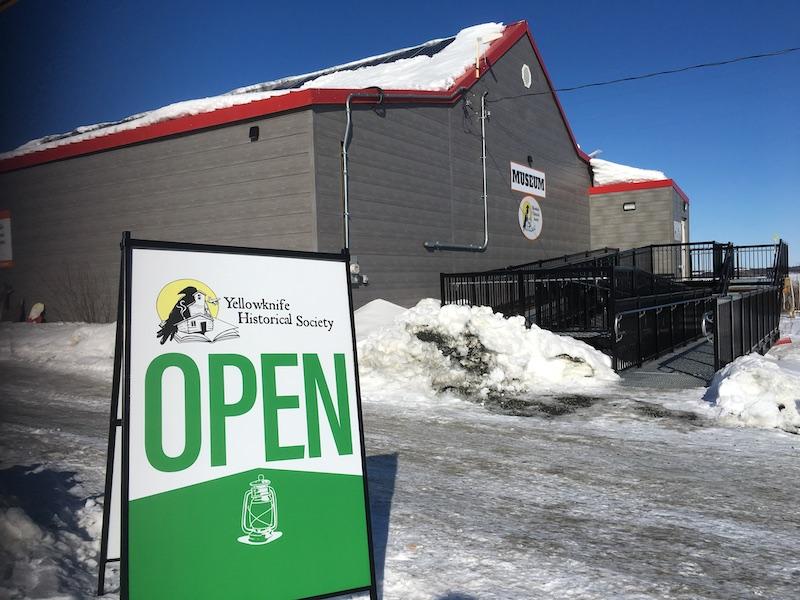
In the museum exhibits, the fascinating and quirky history of Yellowknife is waiting to be discovered. Come on down to Giant Mine to learn the Yellowknife story - located on the Yellowknife Access Road past the Ski Club and Solid Waste Facility.

Click below to download our new brochure!
MUSEUM
How did Yellowknife get it's name? Learn about how the early explorers coined the term after the Indigenous people they encountered over 200 years ago, and what those same people call themselves today in their own language.
Peruse a 4 billion year timeline of local history, from when the first ancient rocks were deposited on the landscape, to the settling of the Yellowknife community, to the modern events that continue to shape the city.
Learn about how rich gold was found in Yellowknife in the 1930s and what it takes to be a gold prospector.
Dress up as a trapper or prospector in our Wall Tent photo booth and children's play area.
Experience the life of an early settler by viewing some of the trash they left behind in gold mining camps in this area.
Read the different perspectives on the legacy of mining, and understand how the rush to mine gold in Yellowknife led to terrible pollution on the land.
See authentic period-dioramas on what a geology office, machine shop, and trading post looked like.
Learn about the discovery of rich diamonds north of Yellowknife and how the city keeps evolving with new mineral discoveries and territorial politics.
All of this and more is on display at the Yellowknife Historical Museum!
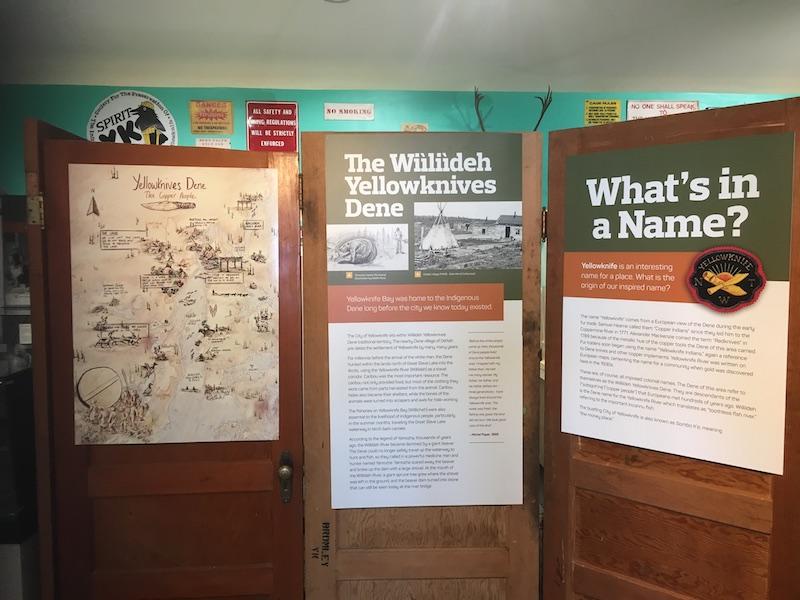
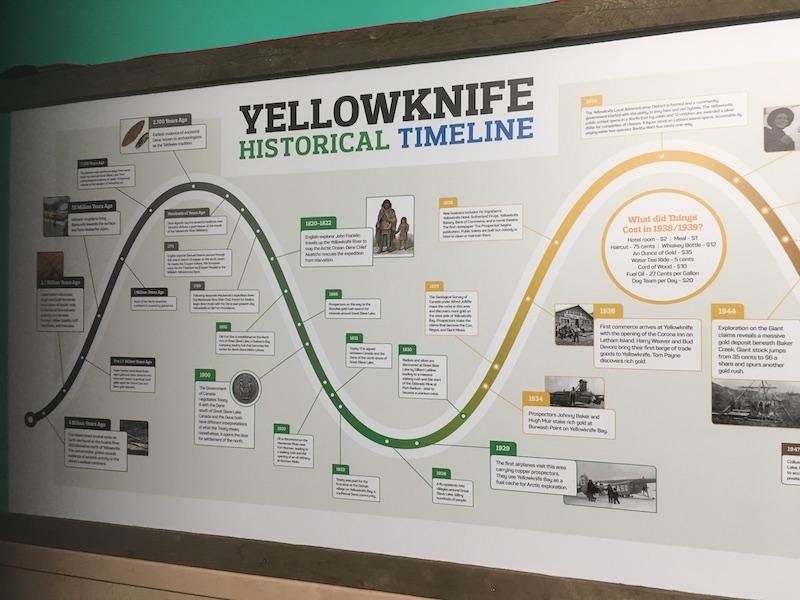

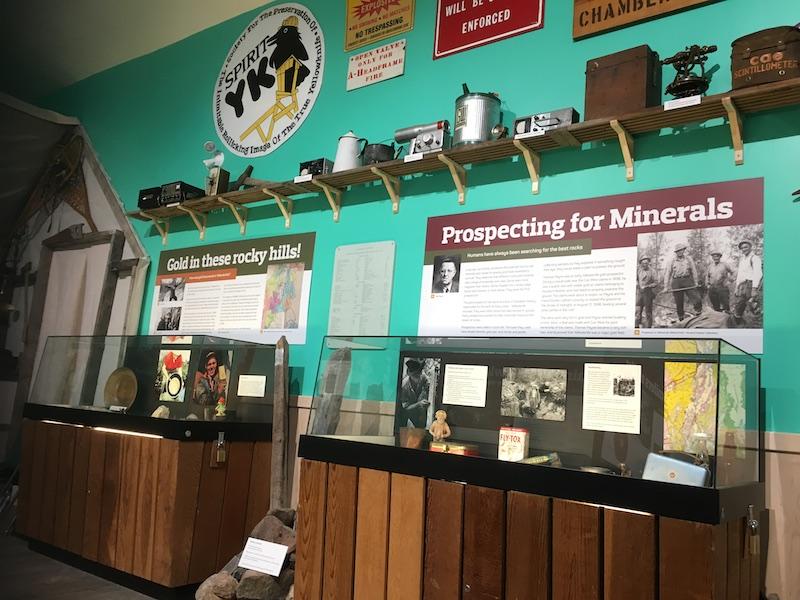


The geology of the north is spectacular and world class. The museum promotes the north's diverse mineral and geological environment through educational displays. This includes an exhibit showing the geological evolution of the Canadian Shield - the oldest part of North America - and how mineral deposits - such as gold, diamonds, and lead/zinc - were formed by Earth's natural processes.
Our geologic treasures are wonderful and educational. Did you know that some of the oldest known rocks in the world can be found in the NWT? Did you know that the earliest evidence for multi-celled life has been discovered in the NWT? Did you know that uranium ores can be used to generate nuclear power? This is your opportunity to learn about the history of the Earth as future visitors navigate through displays of rocks and minerals.
OUTDOOR DISPLAY
Our outdoor exhibits showcase a number of antique vehicles and pieces of machinery illustrative of Yellowknife's industrial heritage, particularly mining equipment from the closed gold mines. This area has become a tourist magnet and is a popular picnic spot in the summer months. The display surrounds the edge of the public boat launch parking lot near the entrance to the mine townsite. It includes an old log cabin from Con Mine (built in 1938 to store explosives), the Brock-shaft headframe (built 1939 at Giant Mine), Giant Mine’s old fire truck, an Alligator amphibious tank used in WWII, a winch from Weaver & Devore trading, old wood-fired boilers, a large bulldozer from Tundra Mine, and a 150-foot long rail track with a variety of underground mining equipment.
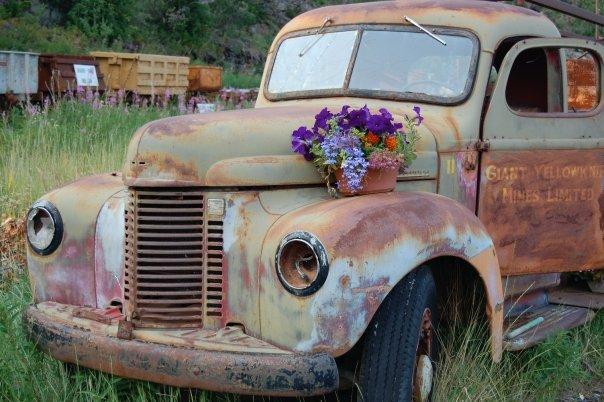
The log cabin area is a great picnic area and the society has installed several permanent picnic tables. An incredible amount of volunteer effort has gone into constructing, landscaping, and maintaining this area for public enjoyment.
ACQUISITIONS
The Yellowknife Historical Society aims to preserve all aspects of community history, including but not limited to: the story of prospecting and industrial mining of gold, local town development and pioneer businesses, regional geology, and the story of early fur trading and Indigenous culture. Collections relating to these stories are held in trust for public benefit, under the stewardship of the Society’s Board of Directors. To build a museum we need artifacts, memorabilia, photographs, and archival documents to add to our collection. We actively pursue old collections from Yellowknife history or the NWT's mining past.

The Society has developed a ‘Collections Policy’ to guide its objectives. The Collections Policy outlines the standards and guidelines that govern the acquisition, care, use and disposal of the society’s collections. It also defines the scope and extent of the society’s collecting activity and provides for the orderly development of its collections, to enable the society to achieve its stated goals. The Collections Policy is periodically reviewed by the Board and updated to accommodate changes in the society’s mandate.
If you have something to donate, please email us! info@yellowknifehistory.com